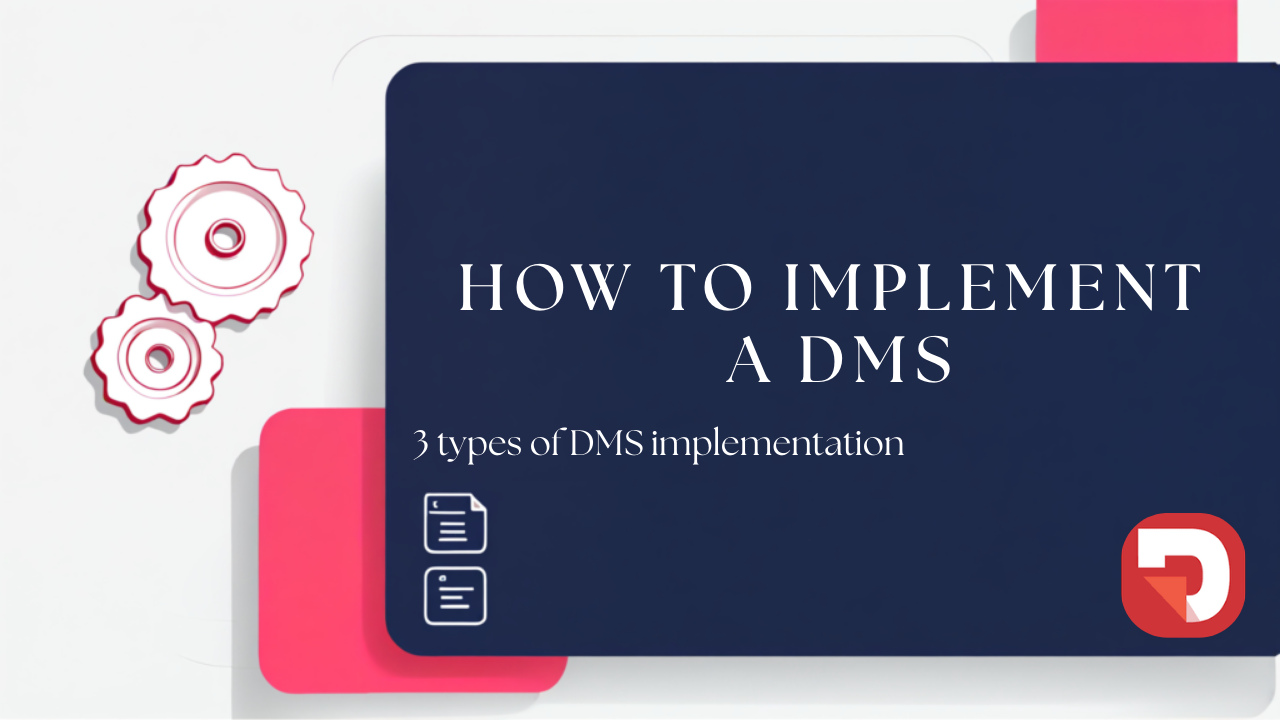
DMS Implementation: How and Where Can You Deploy Your DMS
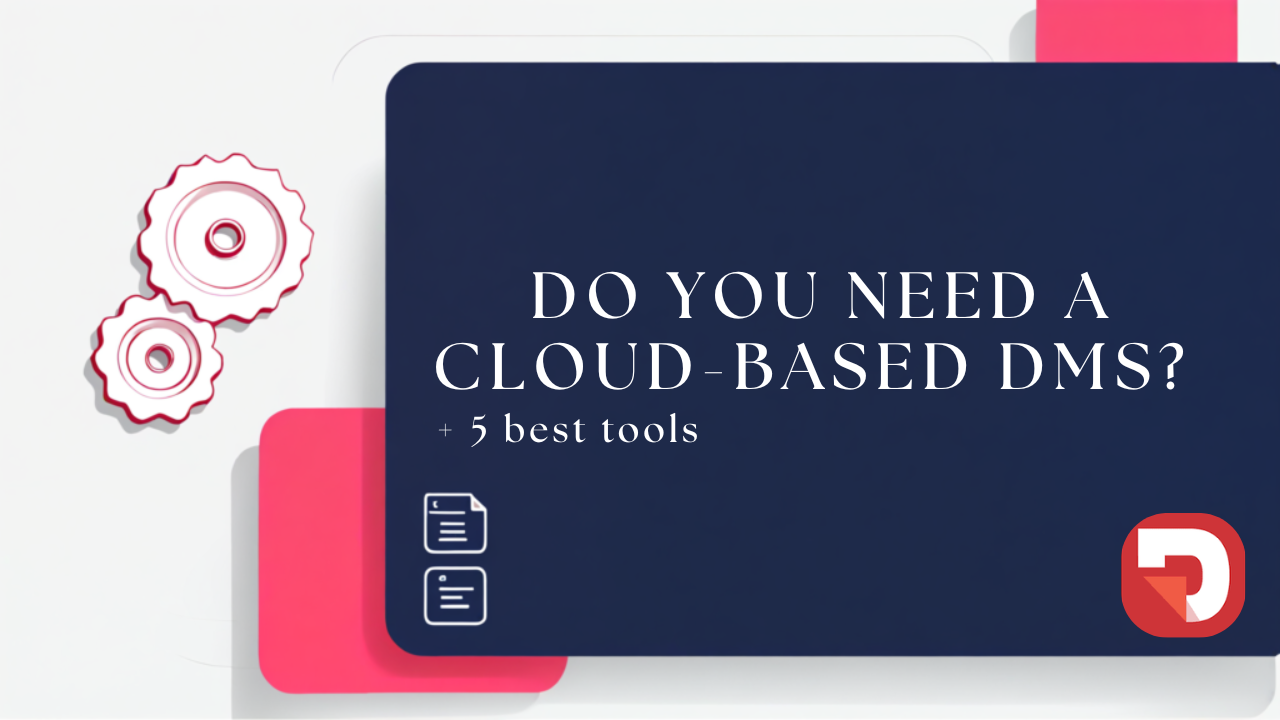
A cloud-based DMS allows you to access your documents anytime and from anywhere, guaranteeing version control, detailed audit trails, and automated workflows.
94% of global enterprises use cloud-based services.
With so many documents, emails, conversations, and deals happening online y doesn’t make sense to have to migrate data constantly.
By using a cloud-based DMS you can guarantee that your entire team has access to the most up-to-date documents. From anywhere.
A cloud-based DMS is a document management system that is hosted entirely online.
This means all your documents can be accessed and managed from anywhere and by anyone as long as they have the proper authorizations and internet connection.
A cloud-based document management system allows you to store, organize, manage, and share your documents quickly and efficiently.
The greatest selling point of moving your document to the cloud lies in getting rid of costly hardware, local storage, updates, and complex IT infrastructure, making your whole document management cheaper, more efficient, flexible, and scalable.
Additionally, implementing a cloud-based DMS means that the growth of your business will no longer be a hindrance, as your system can naturally grow with it. Making this a much more scalable solution that fully local document management systems.
The goal of a cloud-based DMS is to provide centralized storage that will allow you and your team to access the most updated versions of your documents easily.
Some features you can find in a DMS include version control, document indexing, advanced search, and detailed audit trails with timestamps.
A cloud-based DMS should also provide thorough security measures, as security breeches on the internet can be common.
These systems will usually implement encryption, role/based access controls, multi/factor authentication, and compliance with regulations such as GDPR, HIPAA or ISO certifications.
However, there is a caveat.
There are some tools designed to file and store your documents online and, on the other hand, there are cloud-based DMSs. And yes, they are very different.
Cloud storage tools are basically online filing systems, take as an example Google Drive, OneDrive, Dropbox, etc.
DMS and cloud storage systems are both cloud-based document storage tools, however, their purpose and scope are very different.
A cloud storage is essentially a digital version of a shared folder, where you can upload files, categorize them into folders and subfolders and share them with whomever you want.
The best part of these systems is that they’re usually free and pretty simple to use. Additionally, it guarantees that you can access your documents from any device. Which is pretty useful if you have a hybrid work schedule.
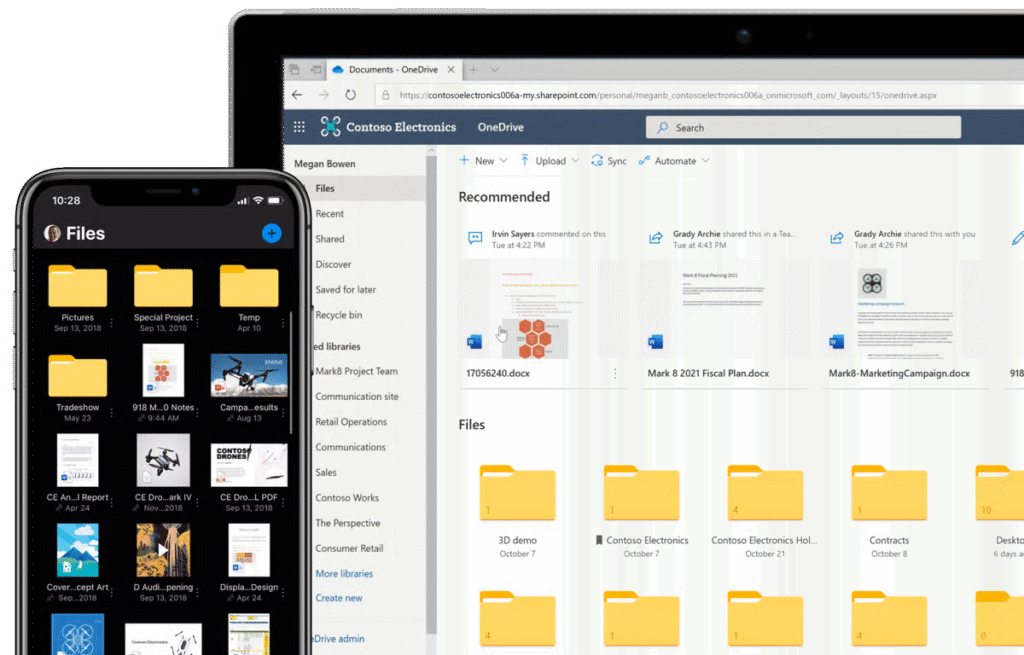
However, cloud storage has its limitations when compared to a proper DMS.
These tools lack advanced features such as automated workflows, audit trails, metadata tagging, compliance tools, and granular access controls.
While these tools are very useful to file your personal documents, or to work on small one-time projects, they can quickly become very disorganized, inefficient and you can be exposed to security breeches if you depend on this online filing system for your business or everyday work.
On the other hand, and DMS offers more advanced features such as document version control, role-based permissions, workflow automation, and regulatory compliance. A DMS is built to handle large amounts and types of documents and can manage your business as it grows.
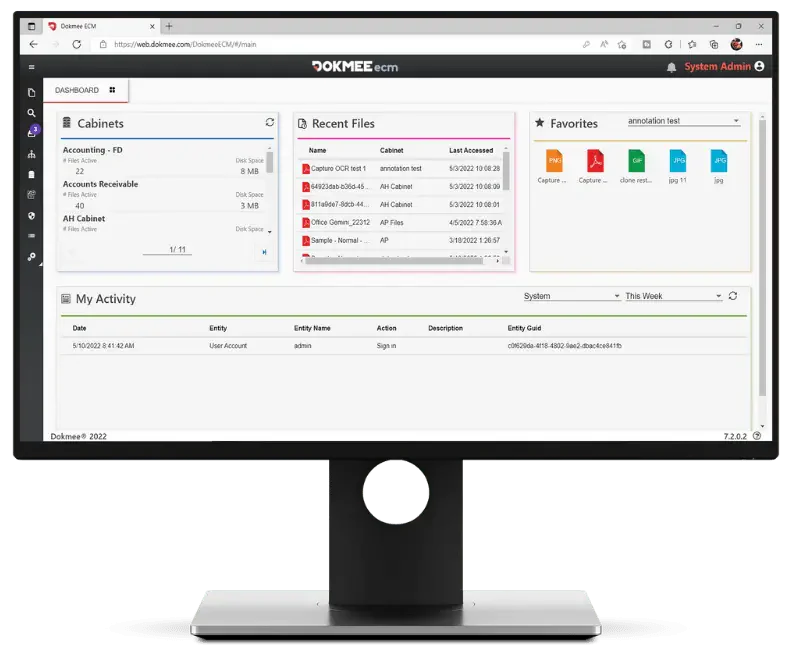
Cloud-based DMS tools are very practical. However, before you decide on your DMS implementation, you should also consider your specific needs.
You can deploy your DMS in 3 different ways:
| Implementation type | Who is it for | Pros | Cons |
|---|---|---|---|
| Cloud-Based DMS | Small to large organizations, especially those with remote teams or multiple offices | – Low upfront cost – Scalable – Accessible from anywhere – Updates, backups, and security are managed | – Reliant on internet connection – Less direct control over data storage |
| On-Premises DMS | Enterprises in highly regulated industries or organizations requiring full control over data (e.g., government, finance, healthcare) | – Full control over data and infrastructure – Meets strict compliance/security requirements – No reliance on third-party cloud providers | – High upfront hardware/software investment – Requires dedicated IT teams – Less flexible and scalable |
| Hybrid DMS | Organizations transitioning to the cloud, or those needing a balance between security and flexibility | – Very flexible – Sensitive data can be stored locally – Supports gradual migration | – More complex setup and management – Higher cost – Integration challanges between systems |
Let’s get into more details.
This system is entirely hosted online and is accessed through the internet based on granular roles and persmissions.
This option doesn’t require any in-house infrastructure or dedicated IT team. The provider will typically manage storage, security, updates, and backups.
You can pay for your software on a subscription basis, which makes it cost-effective and highly scalable.
Cloud deployment is ideal for remote teams or organizations that are scattered around the world.
The downside is reliance on internet connection and less control over physical storage, though most providers offer strong security and compliance certifications.
An on-premise DMS is installed and hosted on your organization’s local servers.
This system gives you complete control over yourr data, configurations and security protocols.
It is a better options for industries who have strict regulatory requirements, such as banks, courthouses, or police stations.
However, this option requires significant upfront investment in hardware and software, ongoing maintenance by in-house IT teams, and dedicated resources for updates and backups.
While it offers maximum control, it can be less flexible and more costly compared to cloud-based systems.
A hybrid system combines both cloud and on-premise solutions, to fit your needs perfectly.
With this system, you would be hosting certain documents and workflows on your local servers, while other would be stored and managed online.
A hybrid approach is especially useful if you’re transitioning gradually from on-premises to cloud systems, or if you’re in an industry where both high security and flexibility are required.
Most DMS and ECM solutions can be hosted online and on-premise.
Here we’ll leave you a selection of 5 tools that offer hybrid deployment or are exclusive to the cloud.
| System | Deployment Options | Best For | Key Strengths | Limitations |
|---|---|---|---|---|
| Dokmee | Cloud, On-Premises, Hybrid | SMBs & enterprises needing capture + ECM | Strong scanning/OCR, modular features, multilingual, easy navigation | Performance issues on large files, Office editing less seamless |
| DocuWare | Cloud, On-Premises, Hybrid | Mid-large businesses, regulated industries | Powerful workflow automation, integrations, compliance, strong search | Setup complexity, storage costs, mobile app limitations |
| Alfresco | Cloud, On-Premises, Hybrid | Enterprises needing customization & compliance | Open APIs, flexible customization, strong records management, open source roots | Requires heavy IT support, UI less intuitive, limited docs |
| M-Files | Cloud, On-Premises, Hybrid | Businesses wanting metadata-driven DMS | Metadata-based organization, great search, compliance, automation | Higher cost, setup effort for metadata, folder mindset shift |
| NetDocuments | Cloud-Native (with sync/offline options) | Legal, finance, professional services | Excellent security/compliance, legal focus, Office/Outlook integrations, search | High cost, slower uploads, UI could be more modern |
Rating ⭐⭐⭐⭐⭐
G2 4.5/5 • Capterra 4.7/5
Overview
Dokmee is a DMS and ECM that can be deployed on the cloud, on-premise or you can also choose a hybrid deployment.
Dokmee specialized on document capture, storage, retrieval, version control, workflows, and secure sharing.
Additionally, every movement will be automatically saved in the audit trails with username and timestamps marked.
Dokmee includes OCR, automated file separation, barcode recognition, search and retrieval, audit trails, etc.
Implementation is usually modular, where you can start with core features and add capture, workflows, etc. Screenshots show a clean interface with Windows-like folder navigation, document previews, metadata entry.
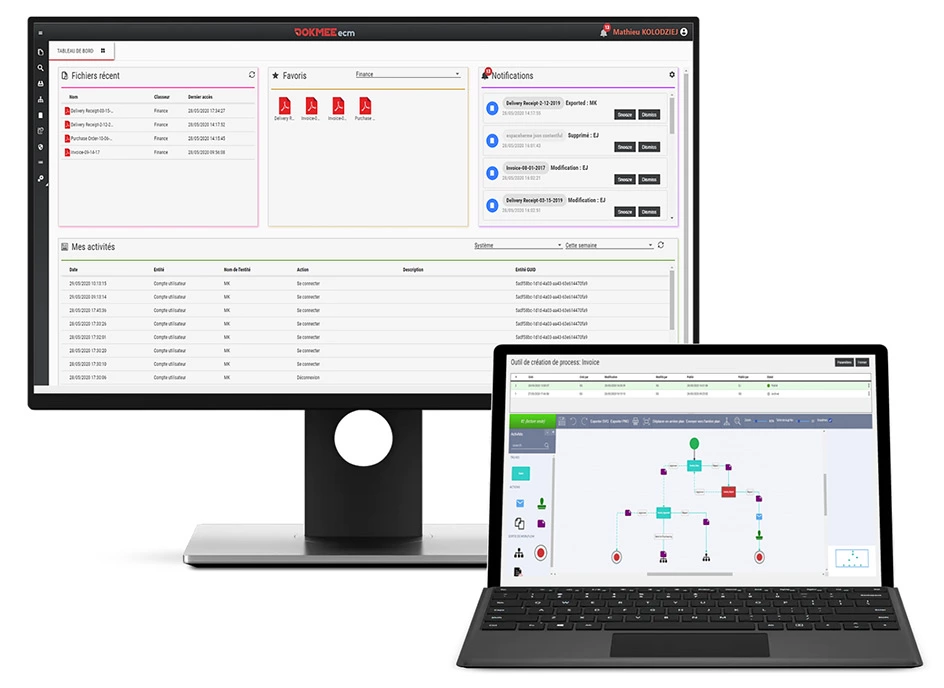
✔️ Pros
✖️ Cons
Rating ⭐⭐⭐⭐⭐
G2 4.4/5 • Capterra 4.6/5
Overview
DocuWare is a cloud-based DMS and workflow automation tool that allows you to manage your documents in real-time.
It supports document capture, archiving, full text search, OCR, and integrates with other major systems in your tool stack.
Like Dokmee, DocuWare can be implemented to fit your needs.
This tools is a good option for medium to large businesses who have complex document processes and need to sync within different departments.
Cloud licenses vary depending on the number of users you wish to include in your system. There are four licenses available that range from 4 to 100 users.

✔️ Pros
✖️ Cons
Rating ⭐⭐⭐⭐
G2 3.8/5 • Capterra 4.1/5
Overview
Alfresco (acquired by Hyland) is and ECM that combines document management, records management, workflow (BPMN), content capture, collaboration, and more.
It also offers a flexible deployment and has many customization features, although it is designed to be cloud-first.
Alfresco offers many integrations so that you can build automated workflows into your regular workflow.
The cloud-based deployment of Alfresco is hoted in securet data centers, although users usually go for a hybrid deployment when dealing with sensitive information.
It is best suited for mid-to-large enterprises, particularly in regulated industries.
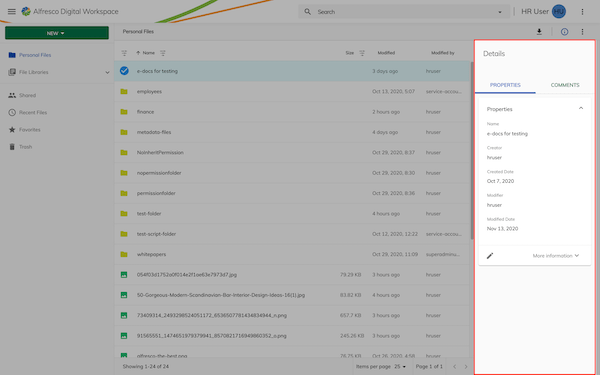
✔️ Pros
✖️ Cons
Rating ⭐⭐⭐⭐
G2 4.3/5 • Capterra 4.4/5
Overview
M-Files is a cloud-friendly, metadata-centric DMS. M-Files operates on different rules that don’t focus on folders, instead documents are filed based on “what they are” by using metadata and tags.
This design is especially valuable for companies that manage large, complex repositories of files.
As a cloud-based DMS, M-Files offers secure, centralized storage accessible from anywhere, while also supporting hybrid deployments.
Its cloud platform integrates with tools such as Microsoft 365, Salesforce, and other line-of-business applications further extend its value, embedding document management directly into everyday workflows.
AI-powered features, including automatic classification and intelligent search, add another layer of efficiency by reducing the need for manual tagging.
While M-Files delivers significant advantages, its metadata-centric design can present a learning curve for new users, particularly for teams accustomed to traditional folder structures.
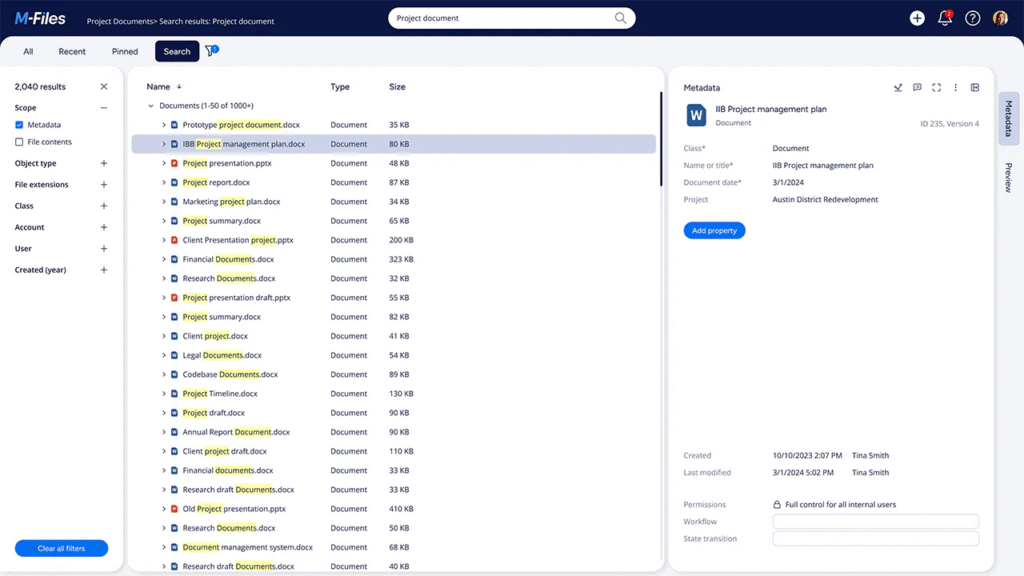
✔️ Pros
✖️ Cons
Rating ⭐⭐⭐⭐
G2 3.7/5 • Capterra 4.3/5
Overview
NetDocuments is a fully cloud-native DMS popular in legal firms, accounting, real estate, etc.
It offers workspace-based organization, document and email management, full text search including OCR, version control, strong security and compliance, remote access, integrations.
Unlike other options, NetDocuments was designed and built to be hosted exclusively on the cloud, this means the platform has strong security measures and is updated fairly regularly.
NetDocuments offers a workspace-based organization. Instead of relying on traditional folder structures, the platform organizes documents and emails into workspaces tied to matters, clients, or projects.
This makes it particularly well-suited for law firms and professional services, where content is typically tied to case files or client engagements.
While NetDocuments is offers great security, compliance, and professional services, some users note that the interface can feel less modern or intuitive compared to newer DMS platforms.
Upload speeds and performance in large-scale environments can also vary, and its subscription pricing model can be costly for smaller firms.
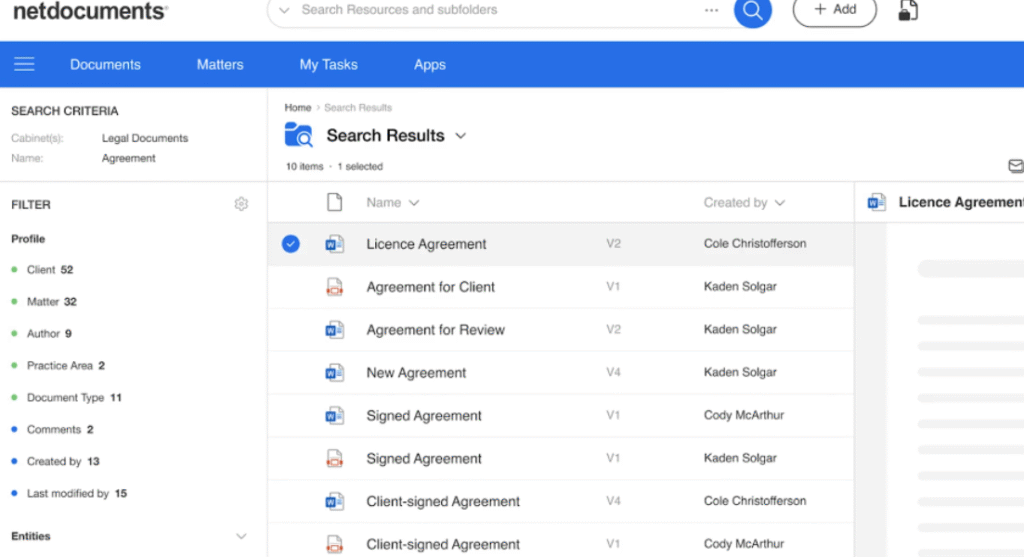
✔️ Pros
✖️ Cons
Yes, you do need a cloud-based DMS.
If you’re still emailing important documents or saving them on shared drives, let me tell you that chances are you’ll either lose documents or take too long to find out the recipient never saw them.
A cloud-based DMS centralizes and secures your documents, making them searchable, while you can automate the processes around them.
You should strongly consider a DMS if your organization is facing any of these challenges:
If you’re ready to make the change, why not start with Dokmee?
You can implement a hybrid deployment so you can migrate your documents gradually (or keep it hybrid). Customization options are endless.
Dokmee offers advanced search, version control, workflow automation, and compliance features to keep your documents safe.
Contact Dokmee today!
Schedule Your Free Demo—Anytime, Anywhere
Experience enterprise-grade ECM with zero hidden fees and instant ROI:
“Dokmee cut our retrieval time by 70%—we saw ROI in 45 days.”
Chad P., CTO